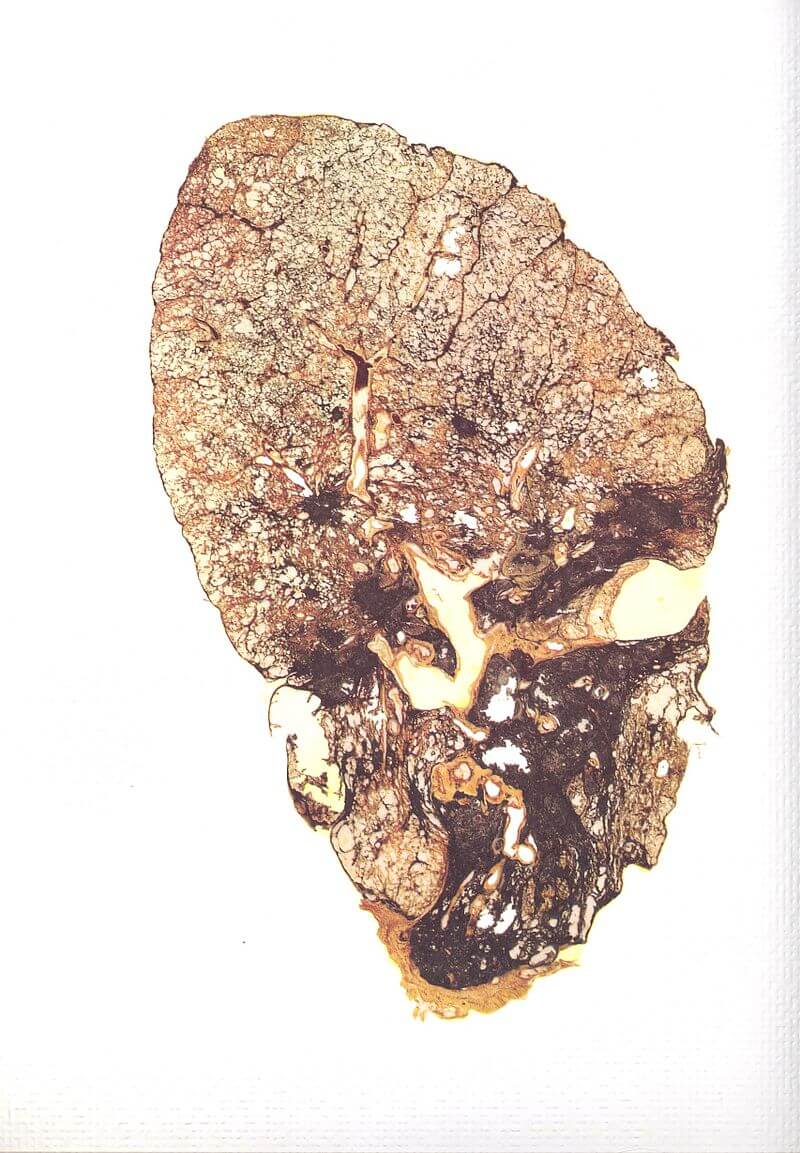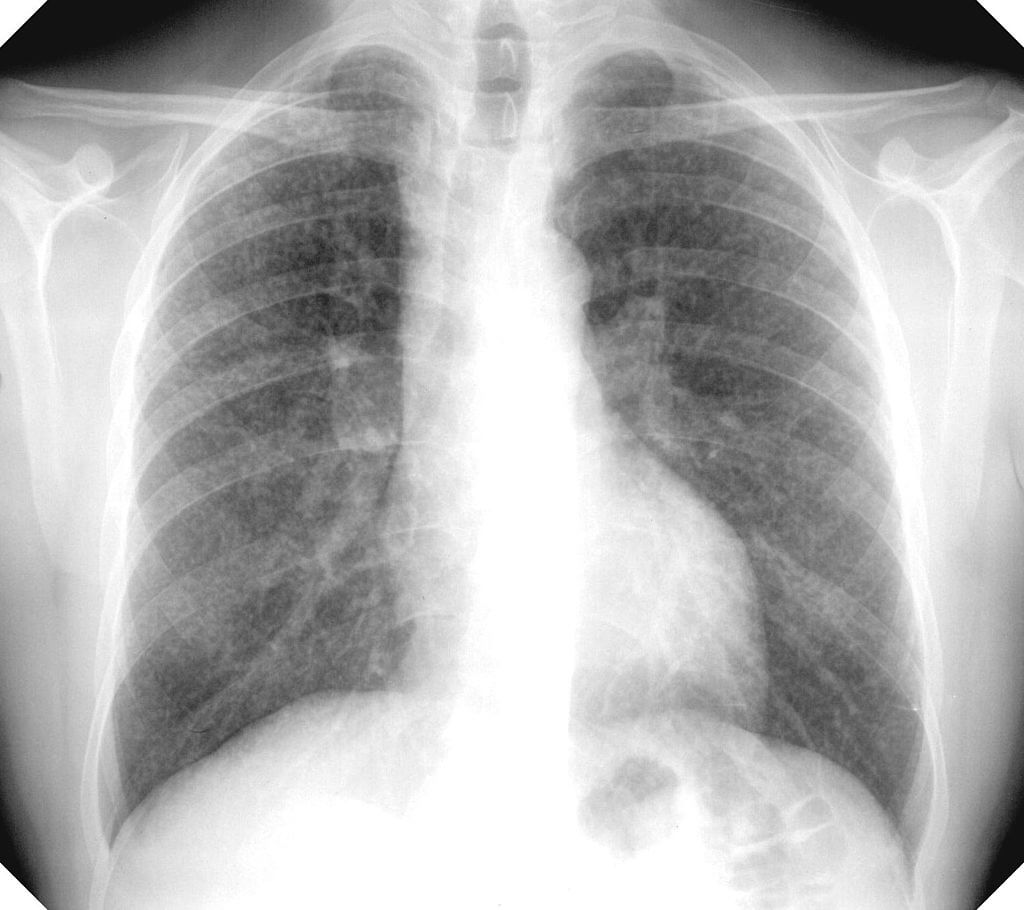What is lung silicosis? The symptoms, causes of silicosis disease and the treatment methods.
Silicosis; a chronic disease of the lungs caused by the long-term ingestion of excessive amounts of silica (SiO2). The disease is most commonly noted in coal, copper, and gold miners, stonecutters, tunnelers, granite workers, and those having to do with sandblasting, stone chipping and buffing, and certain glass, ceramic, and metallurgical processes. Pure silica, or sand, chokes the lymph nodes of the lungs, the normal body mechanism for removing such waste particles.

Slice of a lung affected by silicosis (Source: pixabay.com)
Workers in the tuberculosis laboratory at Saranac Lake, N. Y., and others have demonstrated that silica particles less than 10 microns produce the greatest damage and usually occur in concentrations of greater than 15 million particles per cubic foot before significant penetration to the finer air passages occurs.
The disease is insidious and usually develops over a period of 15 or 20 years of mining activity. It produces a generalized nodular fibrosis of the lungs and predisposes to tuberculosis, pneumonia, emphysema, and bronchiectasis. The highest mortality results primarily from tuberculosis, which runs as high as 60 percent in advanced cases, but also from fibrosis and from emphysema, which strains the right side of the heart, causing pulmonary heart disease (cor pulmonale). The characteristic X-ray picture of diffuse nodularity, plus the industrial history, are essential in the diagnosis. There is no specific treatment for silicosis.

Chest X-ray showing uncomplicated silicosis (Source: pixabay.com)
The efforts of industrial medicine are directed to early diagnosis and prevention. Protective masks, studies of silica concentration in confined spaces, and follow-up chest X-rays are most important.